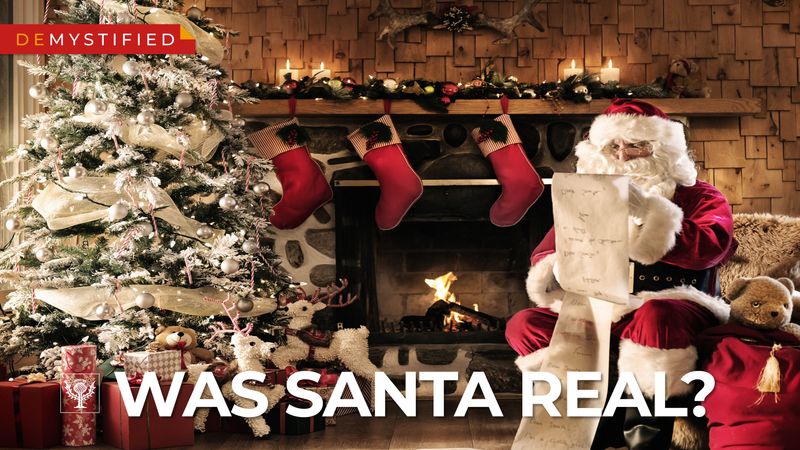For many children living in the United States, especially those who have behaved well all year, the most exciting part of Christmas is the discovery of wrapped packages tucked under the Christmas tree and sweets hidden in stockings hung by the fireplace. Kids are often told that the gifts were left by Santa Claus during his annual nocturnal journey around the world in a sleigh pulled by nine flying reindeer. How have so many people agreed on this story?
Whether or not you believe that Santa Claus is a real person who enters every child’s house by way of a chimney to leave presents, the legendary figure and the tradition of gift giving can be traced back to the Dutch colonists. When they settled in what is now New York City during the 17th century, they brought their legend of Sinterklaas and the custom of leaving presents for children on the eve of December 6. From there, such 19th-century literary works as the poem known as The Night Before Christmas and a mid-20th-century Coca-Cola ad campaign transformed Sinterklaas from a saintly bishop to the white-bearded, red-capped Santa Claus that Americans recognize today.
But who is Sinterklaas, the elder gentleman dressed as a bishop who brings Dutch children gifts in early December? He is based on St. Nicholas of Myra, who, according to Christian tradition, was a bishop in that small Roman town during the 4th century. Nicholas’s reputation for generosity and kindness gave rise to legends of miracles he performed for the poor and unhappy. According to one story, Nicholas restored to life through prayer three children who had been chopped up by a butcher and put into pickling barrels. Another story describes how a young Nicholas secretly provided marriage dowries by dropping gold down the chimneys of three girls whom poverty would otherwise have forced into prostitution and that the gold landed in a stocking left to dry on the fireplace. Nicholas’s death on December 6 is now celebrated as his feast day. His alleged remains were removed from his church at Myra in 1087 to Bari, Italy. The site subsequently became a popular destination for pilgrims, partly because his shrine developed a liquid substance thought to have healing properties.
Such stories about St. Nicholas grew throughout the 2nd millennium and mixed with other traditions—as well as with the deeds of another St. Nicholas (of Sion)—so that he became as legendary a figure as Santa Claus is now. During the 20th century, however, several historians attempted to untangle the historical Nicholas from the myth. Their investigation led them to doubt the bishop’s very existence. He left no writings and had no disciples. His name was not mentioned in any contemporary texts; the earliest reference is more than 200 years after his purported death, and the first biography was written some 300 years after that.
While the uncertainty surrounding his existence was reflected in revised entries on Nicholas in books of saints, several historians maintained that St. Nicholas had lived and had performed many acts of kindness and generosity. They argued that a lack of documentation during his lifetime was not proof of his absence and called for a reconsideration of the texts that had been disregarded. Other devotees assert that the construction of churches dedicated to him during the early Middle Ages is evidence enough. The 2017 dating to the 4th century of a piece of pelvic bone attributed to St. Nicholas (now housed in the United States) offers a tantalizing piece of the puzzle. Interestingly, St. Nicholas’s alleged remains at Bari are missing part of a pelvic bone.
The arguments and discoveries offer some compelling reasons not to completely disregard Nicholas’s existence. So after all is said, can we determine if Santa Claus was a real person? The answer depends on whether you believe.

